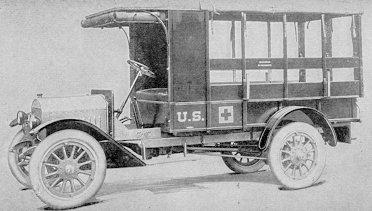Gertrude Stein and Gears
Today, a gear is a gear is a gear. The University of Houston's College of Engineering presents this series about the machines that make our civilization run, and the people whose ingenuity created them.
Gertrude Stein and her lifelong companion, Alice B. Toklas, finished WW-I driving a Red Cross ambulance. Stein couldn't deal with military officialdom. Toklas couldn't deal with the vehicle.
Stein had all the mechanical talent. She could field-strip the primitive ambulance, and she loved driving it. So Toklas handled the military while Stein drove.
Stein got on famously with two American mechanics. They teased her every time the ambulance made any noise. "That French chauffeur is just shifting gears," they'd say. Well, they had good reason to blame the gears.
There was no automatic transmission or power steering. We didn't even have synchromesh gears. You had to double-clutch to shift. It took an athlete's strength and skill to do that without stripping gears.
Early in the war, an American engineer, William C. Stevens, heard about women ambulance drivers. He designed electric motor control systems. He also knew how clumsy gearshifts were.
Stevens knew that driving any kind of vehicle sorely tested a woman's upper body strength. It's no wonder Toklas disliked driving. Stein was the exception, not the rule. If Stevens could simplify shifting, he would almost double the number of people who could drive motor vehicles.
So he used what he'd learned from electric motor systems. He developed his "preselective gear-shift." It was pretty fancy. A box on the steering column had five buttons. They were marked Neutral, Reverse, and Gears 1, 2 and 3. All you did was push the button and shove in the clutch. The gears would shift.
As early as 1916, two now forgotten cars used Stevens's invention. They were the Apperson and the Premier. By the early thirties, Oldsmobile had made the first Hydromatic system. It was the precursor of the automatic transmission.
A few years later, the Bendix company made the precursor of the synchromesh system. Synchromesh was basic to the manual transmissions we've used ever since. Still, Stevens's push-button systems made a brief comeback in the '50s.
I was driving army trucks by then. And the gear shifting problem was still far from solved. I had terrible trouble with the ton-and-a-half truck. That experience leaves me filled with admiration for the adroit and practical Gertrude Stein. They also call me to honor William C. Stevens for recognizing the problem and putting us on the way to solving it -- while the automobile was still very young.
I'm John Lienhard, at the University of Houston, where we're interested in the way inventive minds work.
(Theme music)
I am grateful to Dr. William Howell for suggesting this episode, for sketching it out, and for providing technical detail.
Toklas, A.B., The Autobiography of Alice B. Toklas. New York: Harcourt, Brace and Company, Inc., 1933, Chapter VI.

This ambulance, pictured in the 1923 Wonder Book of Knowledge, is only a slightly later model than Gertrude Stein drove.